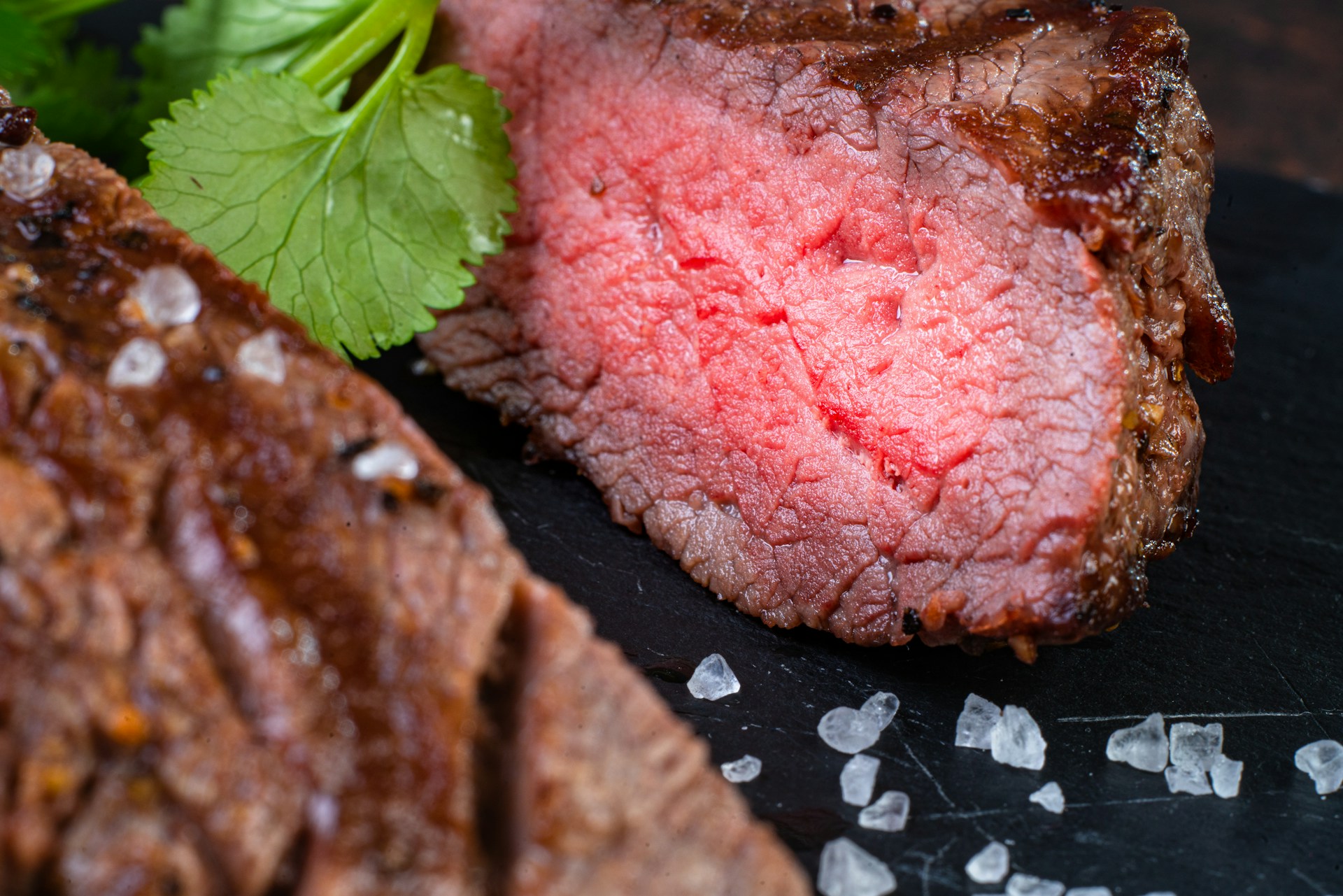Introduction
Beef production in India is a subject that intertwines agricultural practices, cultural beliefs, economic considerations, and governmental regulations. As the world’s largest producer of milk and one of the top countries in livestock farming, India’s stance on beef production is unique. With a significant portion of the population adhering to religions that traditionally avoid beef consumption, understanding the dynamics of beef production in India requires a nuanced approach. This article offers an in-depth analysis of beef production in India, providing authentic and comprehensive information for those seeking to understand this complex topic.
Historical Context of Beef Production in India
Historically, India has had a varied relationship with cattle, where cows hold sacred significance, particularly in Hinduism, Jainism, and certain sects of Buddhism. This religious reverence has shaped the country’s policies and social attitudes toward cattle slaughter and beef consumption.
Evolution of Beef Production
a. Pre-Colonial Era:
In ancient India, cattle were primarily valued for their role in agriculture and dairy production. Beef consumption was not as widespread as it is in some other cultures, largely due to religious and cultural reasons.
b. Colonial Period:
The British colonial era saw changes in livestock farming practices, with an introduction of European breeds and a focus on meat production. However, beef production remained a limited industry due to cultural constraints.
c. Post-Independence Era:
After gaining independence in 1947, India’s agricultural policies emphasized dairy production over meat. The establishment of the National Dairy Development Board (NDDB) and the White Revolution further cemented this focus.
Cultural and Religious Implications
India’s diverse cultural and religious fabric has a profound impact on beef production. While the cow is revered in Hinduism, resulting in restrictions on cow slaughter in many states, other communities, including Muslims, Christians, and Dalits, do consume beef. This dichotomy has led to complex legal and social frameworks that regulate beef production.
Regional Variations
a. North India:
Predominantly Hindu, states like Uttar Pradesh and Haryana have stringent laws against cow slaughter, leading to limited beef production.
b. South and Northeastern India:
These regions have a more diverse religious composition, with higher rates of beef consumption and production. States like Kerala, West Bengal, and certain Northeastern states have more relaxed laws regarding cattle slaughter.
Legal Framework Governing Beef Production
The legal landscape surrounding beef production in India is intricate, governed by both central and state laws. The Constitution of India gives states the authority to legislate on matters related to agriculture and animal husbandry, leading to a patchwork of regulations across the country.
Central Laws
a. Prevention of Cruelty to Animals Act, 1960:
This law, though not directly regulating beef production, influences it by setting guidelines for the humane treatment of animals.
b. Food Safety and Standards Authority of India (FSSAI):
FSSAI regulations govern the slaughtering process, ensuring that meat is safe for consumption.
State Laws
a. Cow Slaughter Laws:
States like Gujarat, Rajasthan, and Madhya Pradesh have banned cow slaughter entirely. On the other hand, states like Kerala and West Bengal permit it under regulated conditions.
b. Slaughterhouse Regulations:
These vary widely, with some states imposing strict controls on where and how cattle can be slaughtered, directly impacting beef production levels.
Beef Production Process in India
The beef production process in India is marked by a series of steps, each influenced by cultural, legal, and economic factors.
Breeding and Rearing of Cattle
- Indigenous Breeds: India is home to numerous indigenous cattle breeds such as Gir, Sahiwal, and Red Sindhi, primarily used for dairy and draught purposes. These breeds are not typically raised for beef.
- Crossbreeding: To enhance meat yield, some farmers engage in crossbreeding indigenous cattle with foreign breeds like Jersey or Holstein Friesian.
- Feeding Practices: Cattle in India are often fed on crop residues, grazing lands, and feed supplements. Intensive feeding practices aimed at beef production are not widespread due to economic constraints and the primary focus on dairy.
Slaughtering Process
- Regulated Slaughterhouses: In states where beef production is legal, slaughtering takes place in government-regulated slaughterhouses, which adhere to FSSAI guidelines.
- Illegal Slaughter: Due to strict laws in many states, illegal slaughterhouses do exist, often operating under poor conditions, raising concerns about animal welfare and food safety.
Post-Slaughter Processing
- Processing Units: Beef processing involves cleaning, cutting, and packaging. In India, this is usually done in small-scale units rather than large industrial facilities, with much of the meat being consumed locally or exported.
Economic Impact of Beef Production
The economic implications of beef production in India are significant, particularly for certain states and communities that rely on it as a source of income.
Contribution to GDP
- Livestock Sector: The livestock sector, including beef production, contributes around 4.11% to India’s GDP. However, beef’s share is relatively small compared to dairy and poultry.
- Employment: Beef production and related activities provide employment to millions, especially in rural areas. This includes roles in cattle rearing, slaughtering, processing, and distribution.
Export Market
- Global Standing: Despite domestic restrictions, India is one of the largest exporters of buffalo meat (commonly referred to as “beef” in global markets). The export of buffalo meat, which is culturally more acceptable than cow meat, contributes significantly to India’s economy.
- Key Markets: Major importers of Indian buffalo meat include Vietnam, Malaysia, Egypt, and the Middle East. The demand for lean meat, low in fat and cholesterol, makes Indian buffalo meat popular in these regions.
Price Fluctuations and Market Dynamics
- Domestic Demand: The domestic demand for beef is largely localized to certain regions and communities. This limited demand influences market prices, which tend to be lower compared to poultry or mutton.
- Export Prices: Export prices are influenced by global demand, currency exchange rates, and international trade policies. Fluctuations in these factors can have a direct impact on the profitability of beef production.
Challenges in Beef Production
The beef production industry in India faces numerous challenges, from legal hurdles to social opposition and economic barriers.
Legal and Regulatory Challenges
- Stringent Laws: The varying laws across states create a fragmented market, making it difficult for producers to operate consistently and profitably.
- Illegal Trade: The existence of illegal slaughterhouses poses risks to public health, animal welfare, and the legal beef industry.
Social and Cultural Opposition
- Religious Sentiments: Beef production is often met with opposition from religious groups, leading to social tensions and even violence in some cases.
- Cultural Stigma: In many parts of India, consuming beef is stigmatized, affecting the marketability and acceptance of beef products.
Economic Barriers
- Low Investment: The beef industry receives lower investment compared to other sectors like dairy or poultry, limiting its growth potential.
- Lack of Infrastructure: Poor infrastructure, especially in rural areas, hampers efficient beef production, processing, and distribution.
Sustainability and Ethical Considerations
With global attention on sustainable agricultural practices, the beef production industry in India is also under scrutiny for its environmental impact and ethical considerations.
Environmental Impact
- Greenhouse Gas Emissions: Cattle farming is associated with significant greenhouse gas emissions, particularly methane, which contributes to global warming.
- Land and Water Use: Beef production requires extensive land and water resources. In India, where agricultural land is scarce, this raises concerns about the sustainability of beef production.
Animal Welfare
- Ethical Treatment: The treatment of cattle in the beef industry is a major concern, with issues ranging from poor living conditions to inhumane slaughter practices in unregulated facilities.
- Government Initiatives: To address these issues, the Indian government and various NGOs have launched initiatives to promote humane practices in cattle rearing and slaughtering.
Future Prospects of Beef Production in India
The future of beef production in India is likely to be shaped by a combination of policy changes, market dynamics, and societal shifts.
Policy Reforms
- Unified Legislation: There is a growing call for more unified legislation across states to streamline beef production and reduce illegal activities.
- Incentives for Sustainable Practices: Future policies may focus on incentivizing sustainable and ethical beef production practices to align with global standards.
Market Expansion
- Export Growth: Given India’s strong position in the global buffalo meat market, there is potential for expanding exports, particularly to emerging markets.
- Domestic Market Development: With changing dietary patterns, there may be opportunities to develop the domestic beef market, particularly in urban areas and among non-Hindu communities.
Technological Advancements
- Breeding and Rearing: Advances in breeding techniques, such as selective breeding for better meat yield, could improve the efficiency of beef production.
- Processing and Distribution: Technological innovations in processing and cold chain logistics could enhance the quality and shelf-life of beef products, making them more competitive in both domestic and international markets.
Conclusion
Beef production in India is a multifaceted industry, deeply influenced by cultural, religious, legal, and economic factors. While the industry faces significant challenges, including strict regulations and social opposition, it also holds potential, particularly in the export market. As India continues to navigate the complexities of beef production, a balanced approach that considers cultural sensitivities, economic opportunities, and sustainable practices will be essential for the future growth of the industry.
FAQ on Beef Production in India
1. Is beef production legal in India?
Beef production is legal in some states of India, while others have stringent laws banning cow slaughter. The legality varies based on regional regulations and cultural practices.
2. What is the primary source of beef in India?
The primary source of beef in India is buffalo meat, which is more culturally acceptable than cow meat and is the main type of meat exported internationally.
3. Which states allow beef production in India?
States like Kerala, West Bengal, and certain Northeastern states allow beef production under regulated conditions, while states like Gujarat, Uttar Pradesh, and Rajasthan have strict bans on cow slaughter.
4. What are the major challenges faced by the beef production industry in India?
The major challenges include legal restrictions, cultural and religious opposition, low investment, lack of infrastructure, and the existence of illegal slaughterhouses.
5. How does beef production impact the economy of India?
Beef production, particularly buffalo meat, contributes to the economy through exports, providing employment in rural areas and contributing to the livestock sector’s share of the GDP.
6. What is the environmental impact of beef production in India?
Beef production in India has a significant environmental impact, including greenhouse gas emissions and extensive use of land and water resources, raising concerns about sustainability.
7. Is there a market for beef within India?
The domestic market for beef is limited and localized, primarily consumed by non-Hindu communities in regions where it is culturally acceptable and legally permitted.
8. How does the government regulate beef production in India?
The government regulates beef production through a combination of central and state laws, focusing on animal welfare, food safety, and legal slaughterhouse operations.
9. What is the future of beef production in India?
The future of beef production in India may see growth in export markets, policy reforms for more unified legislation, and technological advancements in breeding and processing.
10. How does beef production relate to animal welfare in India?
Animal welfare is a significant concern in the beef industry, with issues related to poor living conditions and inhumane slaughter practices, prompting government initiatives for humane treatment.




